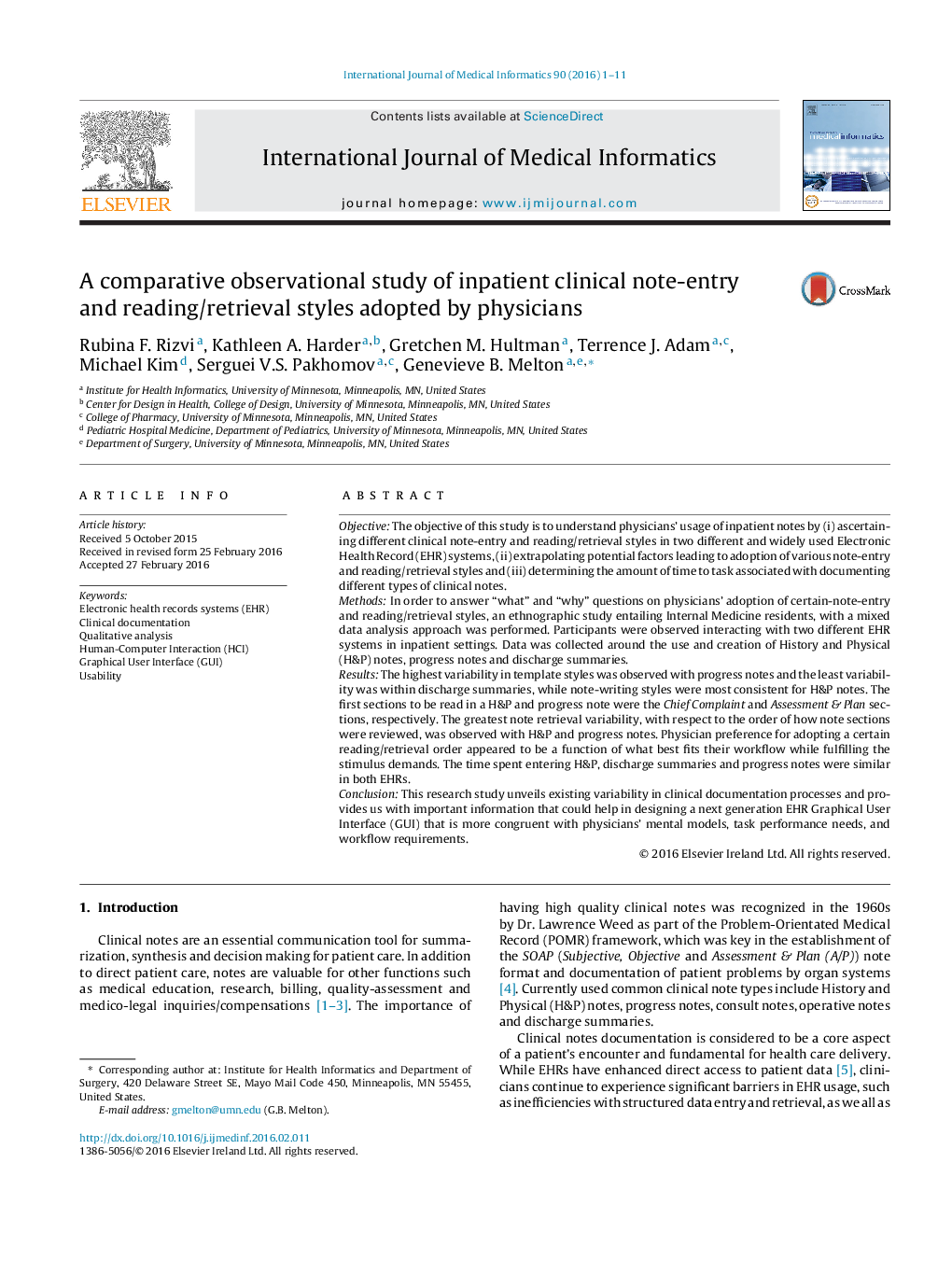| Article ID | Journal | Published Year | Pages | File Type |
|---|---|---|---|---|
| 516093 | International Journal of Medical Informatics | 2016 | 11 Pages |
•Physicians utilize different but congruent styles for clinical note-entry and data reading/retrieval tasks.•Note templates showed highest variability with progress notes and least with discharge summaries. Writing styles were most consistent for H&P notes.•The first section to be read for H&P and progress notes were CC and A/P respectively.•Greatest note retrieval variability was observed with H&P and progress notes.•Time to write a particular note was comparable in both systems with H&P taking the most time and progress note taking the least time.
ObjectiveThe objective of this study is to understand physicians’ usage of inpatient notes by (i) ascertaining different clinical note-entry and reading/retrieval styles in two different and widely used Electronic Health Record (EHR) systems, (ii) extrapolating potential factors leading to adoption of various note-entry and reading/retrieval styles and (iii) determining the amount of time to task associated with documenting different types of clinical notes.MethodsIn order to answer “what” and “why” questions on physicians’ adoption of certain-note-entry and reading/retrieval styles, an ethnographic study entailing Internal Medicine residents, with a mixed data analysis approach was performed. Participants were observed interacting with two different EHR systems in inpatient settings. Data was collected around the use and creation of History and Physical (H&P) notes, progress notes and discharge summaries.ResultsThe highest variability in template styles was observed with progress notes and the least variability was within discharge summaries, while note-writing styles were most consistent for H&P notes. The first sections to be read in a H&P and progress note were the Chief Complaint and Assessment & Plan sections, respectively. The greatest note retrieval variability, with respect to the order of how note sections were reviewed, was observed with H&P and progress notes. Physician preference for adopting a certain reading/retrieval order appeared to be a function of what best fits their workflow while fulfilling the stimulus demands. The time spent entering H&P, discharge summaries and progress notes were similar in both EHRs.ConclusionThis research study unveils existing variability in clinical documentation processes and provides us with important information that could help in designing a next generation EHR Graphical User Interface (GUI) that is more congruent with physicians’ mental models, task performance needs, and workflow requirements.
